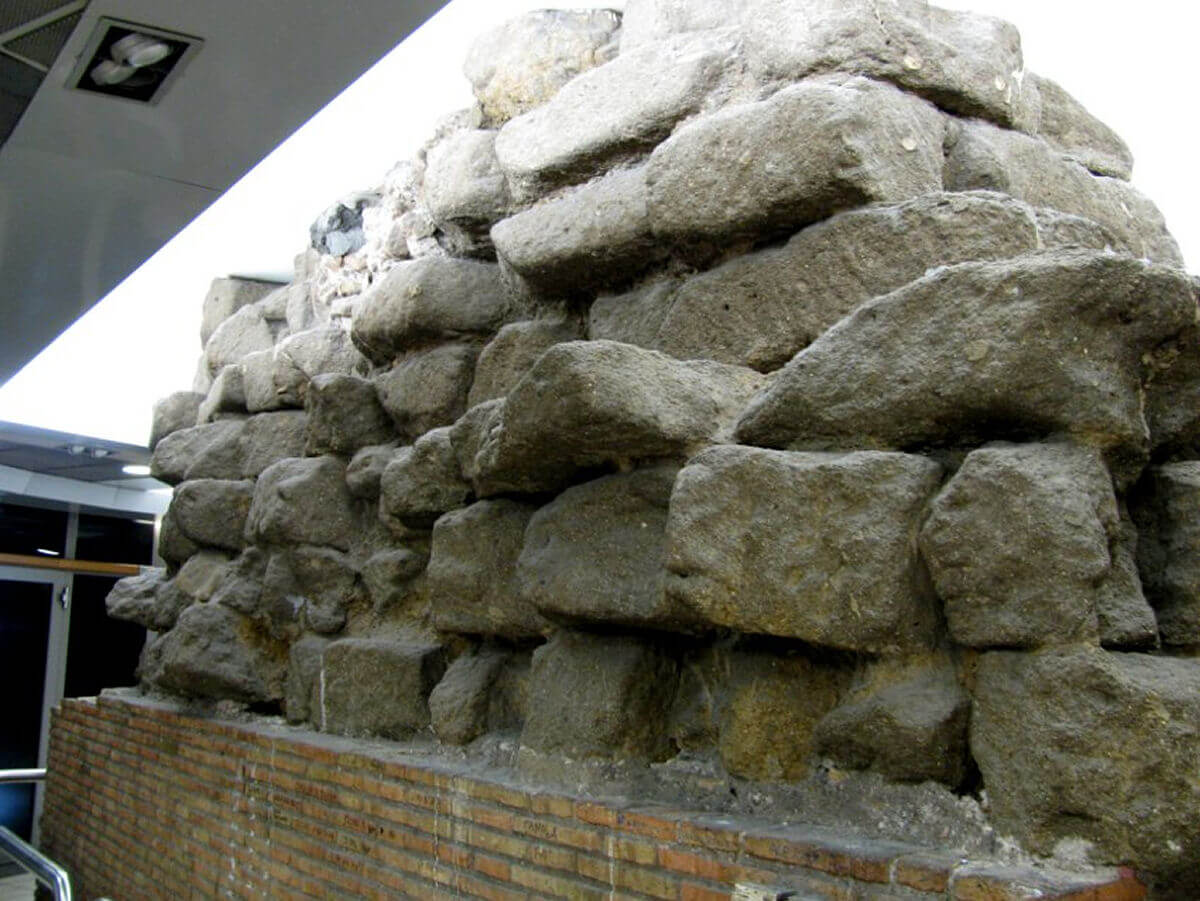Introduction
Constructed during the period of the Roman Republic, the Servian Wall was a defensive fortification that enclosed about 610 acres of ancient Rome, including all seven hills. While the Tiber River provided a natural barrier to the city's west, the wall slowed incursions coming over the land from the north, east, and south.

Ursus, CC BY-SA 3.0, via Wikimedia Commons
A surviving section of the Servian Wall next to the Termini railway station in Rome
Legend and previous scholarship attribute the wall's construction to Servius Tullius, the sixth king of Rome, who ruled during the 6th century BC. While named for the ruler, analysis of the rock used in the wall's construction confirms it was actually built almost two hundred years later.
Construction
The builders of the Servian Wall initially used Cappellaccio tuff, a volcanic rock excavated from the Alban Hills, about 12 miles south of Rome. The wall suffered damage in 390 BC during an incursion by a tribe of Gallic raiders from Northern Italy. Historians believe this was the only time an enemy breached the wall. According to the Roman historian Titus Livy, the Galls only made it inside because the Romans, retreating from the Battle of the Allia, failed to secure the gates behind them.
Following this sack of Rome, builders replaced the ashy sedimentary rock with Grotta Oscura tuff, which the Romans took from Veii, a conquered Etruscan city located 10 miles northwest of Rome. Beyond strengthening the wall with better rock, the Romans dug a trench along the exterior, especially at points where the topography made construction difficult. This excavation further extended the height invaders would have to surmount in order to climb over the wall.
While the Servian Wall's height varied over its 6.8 mile length, it reached a maximum of 33 feet tall and 12 feet thick. Researchers believe it featured 16 gates, although only three of these remain today.
Function
The wall secured Rome from invading tribes. It also provided the Romans with a tactical advantage for repelling enemy attacks and the opportunity to rally forces to vulnerable areas during attacks. They placed catapults and other weaponry at various points along the wall for defense.
In addition, large mounds of dirt were placed against the wall interior along much of the northern section, further fortifying the structure. These earthen ramps were called aggers. The construction material was likely to have been the refuse from the excavation to dig the trenches running along the wall's exterior. They provided a broad platform from which Republican legionaries could marshall their defensive efforts.
Some historians say that the walls were so daunting that they deterred Hannibal from attacking Rome during the Second Punic War.
Through the Empire
As Rome's military might grew during the late Republic Era, potential threats to the city were either vanquished or fell under Roman control, making the wall unnecessary. Focus shifted to other civic projects, leading to neglect of the wall's maintenance.
Additionally, as the Roman population increased, the city of Rome itself expanded beyond the wall in every direction. Rather than demolishing the wall, the Romans simply built around the structure, as was the case in other Roman provinces such as the London Wall in Londinium, in the northern province of Britannia. Sections were incorporated into new projects, used as foundations for larger buildings, or left to deteriorate. As Imperial rule took hold, some surviving gates were converted into monuments celebrating significant consuls or wealthy patrician patrons.
Later in the period of the Roman Empire, as Roman military strength waned and invading Germanic tribes became a threat, the emperor Aurelian ordered the construction of the Aurelian Walls to secure the city.
Visiting the Ruins Today
Only fragments of the wall survive today, but they are present throughout the modern-day city of Rome. The largest surviving section is conveniently at Termini Station, Rome's central rail hub near Piazza dei Cinquecento. In ancient times, this section of the wall guarded the northeastern part of the city.
Interestingly, as a monument and symbol of present-day Roman citizens' regard for their city's history, a piece of the wall is preserved within a McDonald's on the train station's lower level.
One of the three surviving gates is near Via di San Vito. Known as the Porta Esquilina during ancient times, it was repurposed during the Empire as an arch to honor Emperor Gallienus, who ruled from 253 to 268 AD. The monument is also called the Arch of St. Vitus due to its proximity to a nearby church.
The second gate is the Porta Caelimontana, which borders Caelian Hill. It was repurposed in 10 AD as the Arch of Dolabella, honoring Publius Cornelius Dolabella, a consul.
The third gate, Porta Carmentalis, is at Via del Teatro di Marcello. Uniquely, it is a double arch. According to legend, one side was called Porta Scelerata, or "cursed Gate." It commemorates the 477 BC Battle of Cremera, where the Etruscans crushed a valiant detachment of 306 Roman soldiers. The second arch, called the Porta Triumphalis, was only allowed to be used by returning Romans celebrating a victory.



